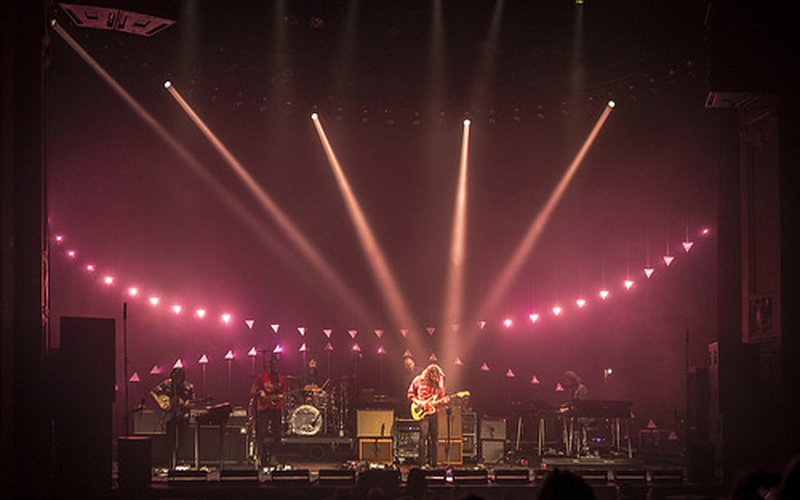
Last Monday, at the first of two sold-out shows at The Moore, Philly's The War on Drugs delivered nothing short of a visually and viscerally stunning display of dream rock dopeness with their cascading waterfall of sound. It's like multiple shots of Nixon-defying dope coursing through your veins that makes you in-the-moment bliss out, forget your surroundings, cavort in (or around) your seat, and cathartically howl along to the atmospheric amphetamine that is their euphoric sound. But the dark calm before the synth-riders-on-the-storm was opener Phoebe Bridgers, an LA-bred songstress and embracer of acoustic and melancholic strummers.
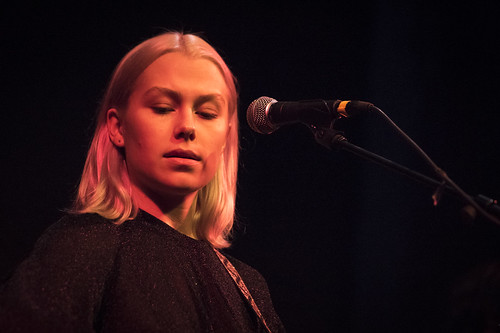
Supporting The War on Drugs for both shows, and part of their Pacific Northwest tour, Phoebe Bridgers laid the night's foundation of balladry with her harrowing folk songwriting, which grabbed the attention of Ryan Adams enough to record her debut EP, in 2015, on his label.
The poetry of her craft encompasses a dashing timbre, delicate distress, and a brilliant display of dexterity. She's dexterous to the point where she dared to tune all her strings to an alt-tuning without using a tuner, which, one, is kind of a performing taboo, and two, is pretty difficult to pull off by ear, but she did so tactfully and used it to her advantage to accent her aloofness on stage muttering, "To be anticlimactic, here's another slow, sad song."
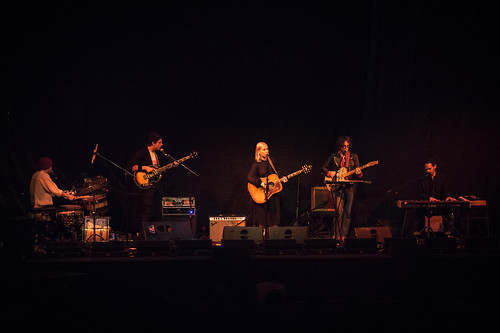
There's something about Bridgers' emotive lyricism that seems to have a cinematic awareness that portrays a forlorn cast of feelings pondering through a rainy window. The balance of slide guitar, minimal -- yet intentional -- drum hits and punctuated piano all paint a soundscape that draws you into her angsty world. To the crowd's delight, she paid homage to Tom Petty by playing a stag version of "It'll All Work Out." She cashed out with "Motion Sickness" the one upbeat song on her setlist that night. She'll be back in Seattle supporting Noah Gundersen at The Neptune on Friday, November 17th.
Now the band of the hour.
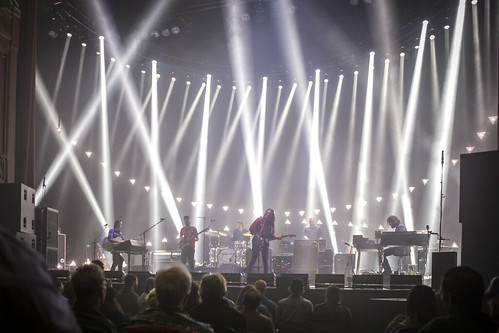

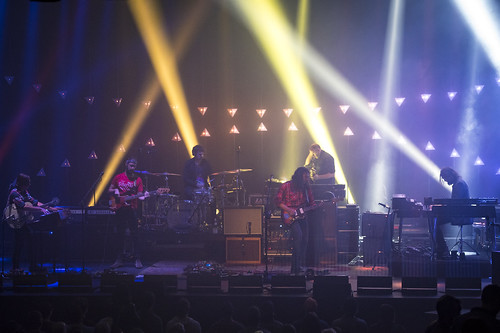
The anticipation of being awestruck floods the crowd as leader/songwriter Adam Granduciel and his band take the stage. The Moore Theater continues to billow with fog, rolling in like a mid-winter Seattle morning, so thick that it initially envelops half of the main floor. Before they even started playing their set fans were giving them a standing ovation, which certainly wouldn't be the last for the night. It's easy to say they opened with a few crowd-pleasers since the crowd literally one-upped each song with raving hoots and hollers as the night progressed with high-octane energy, sensory-overload LED acrobatics and a crescendo of wave after wave of climaxes.
The '80s rock 'n' roll demeanor of The War on Drugs can be attributed to the roots Adam Granduciel planted when he first started the band with Kurt Vile based on their affinity for Bob Dylan. The band's earlier, more folk-centered material reflects a mid-career stage of Dylan, whereas, their latest successes A Deeper Understanding (2017), their major label debut, and Lost in the Dream (2014), their commercial breakthrough, both reflect a later nod to greats like Dylan, in their slow jams, and Springsteen in their more adrenaline-throttled jams. This time around, they seemed to promote their 2014 and beyond brand.
So naturally, with 'roided-out riffs from Granduciel, bulging baritone sax solos from Jon Natchez, and a feeling of being raptured with rippling melodies, it's no wonder the band is able to satisfy and galvanize showgoers for a two-hour set. They're smart. They know how to appease their audience through the spectacle of synchronized lighting. When they played their sonorous single "Red Eyes" from Lost in the Dream they had the stage dressed in crimson. When they played "An Ocean in Between the Waves" they were in a cerulean ocean via special effects of wavering, ground-lit lighting. When the music was minimal the convex and concave light fixtures were manipulating your mood to match. Theatrically, towards the end of the show, after an insatiable amount of brightness, the band descended into a slow decrescendo -- each measure met with a little less light until they slowly faded into a full-fledged, foggy, dark oblivion. The absence of light was just as breathtaking as the omnipresence of light. Leaving a show with such an eidetic affect is a true testament to the artistic arc of The War on Drugs that can only bend towards a brighter light.
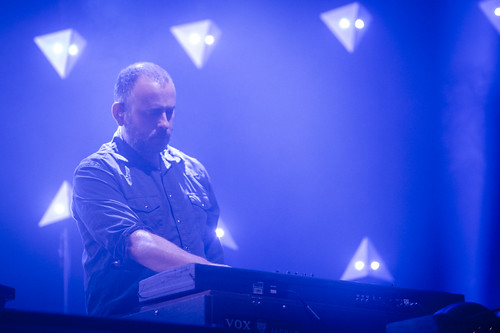
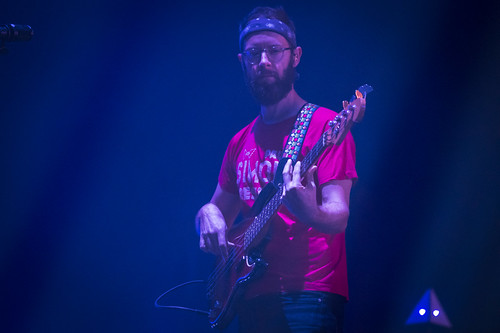
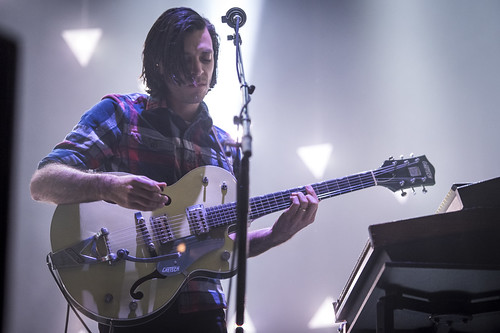
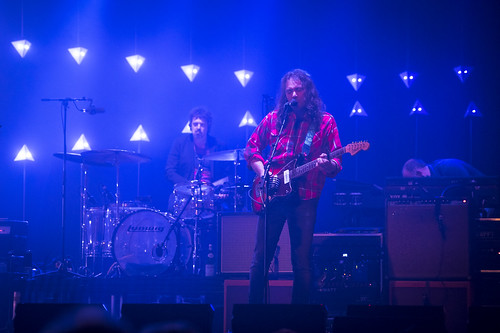
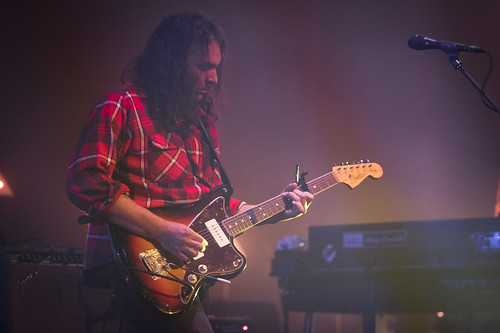
Like a kind of watershed moment, there are live show experiences before seeing Arcade Fire and live show experiences after seeing Arcade Fire. They're really a gauge for everything now. A religious experience whether you’re religious or not. A spiritual “Wake Up” call. A concerted church. An eideti…
As a born and bred Northwesterner, seeing a dual lineup of my teenage (and adult) favorites Modest Mouse and Built To Spill play at the fair I went to every single year from the time I was a child until I was a pre-teen, the Puyallup Fair (I'm sorry, but it will never be the Washington State Fair t…